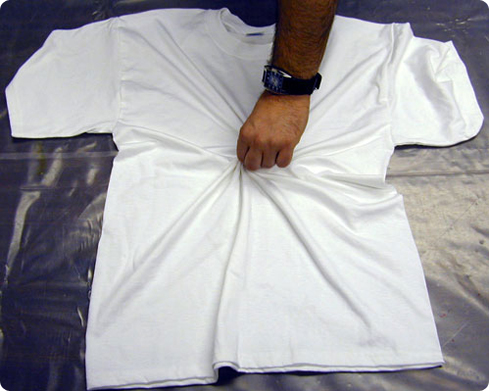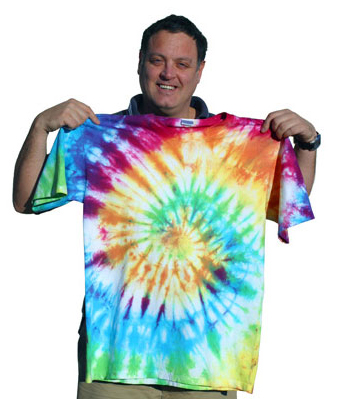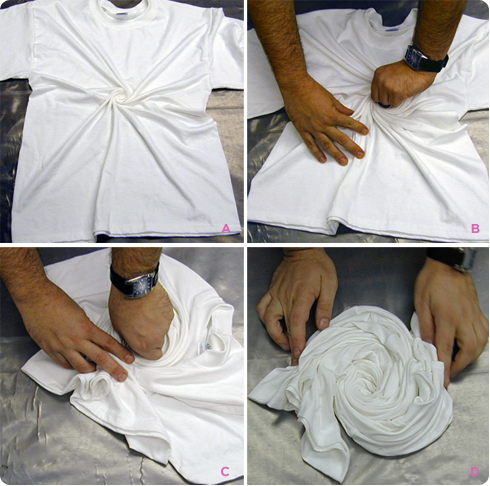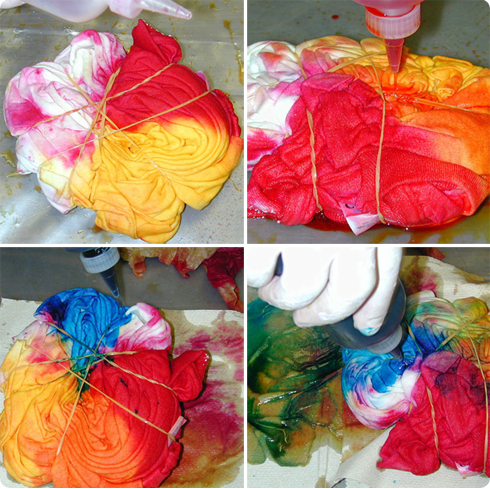
- Dharma Fiber Reactive Procion type dye is the dye of choice for all cellulose fibers, like cotton, rayon, hemp, bamboo, Tencel, etc. They are even sometimes used for silk because they are so economical. This is the dye you've seen on tie-dyes on the street, at fairs, festivals and concerts - the colors are brilliant and permanent. They don't fade, even after repeated washings. Because they don't come off, they are even safe on infant clothing and clothing for chemically sensitive folks, once excess dye and chemicals are properly washed out. They are economical, and easy to use. Superior to supermarket dyes in every way
How to page https://www.dharmatrading.com/techniques/tiedye/tie-dye-instructions.html
https://www.dharmatrading.com/html/eng/529106-AA.shtml
Let's get started!
How to Make the Classic Spiral Tie-Dye T-shirt:
If you are looking to learn the basics of tie-dye folds and patterns, there really is no better way to do so than checking this video out.
Step 1: Place a pre-washed, still damp (the fabric should not be dripping wet, but evenly damp as if it came directly out of the washing machine), t-shirt flat on a smoothed plastic drop cloth.
Step 2: Pick a spot on the shirt and pinch some fabric to place between your fingers. Some use a fork in place of your hands but that has been known to tear the fabric if you are not careful.

Step 3: Twist your fingers to begin the spiral twirl and begin wrapping the fabric around your pinch. Continue twisting until it resembles the shape of a cinnamon roll.
Step 4: Rubber bands (or tied string) is used to hold the fabric together. Slide the rubber bands under and over the spiral so that the fabric will hold its shape during the dyeing process.

Step 5: Wear your dust mask and dissolve 1 cup (8 oz.) of Soda Ash Fixer per gallon of warm water. Soak the tied garments about 5-15 minutes (until saturated). Reuse solution until gone. Squeeze out excess so garment is just damp, not dripping.

Step 6: Using your dust mask and gloves, combine water with all chemicals except dye. Add liquid to dye gradually, pasting up to avoid lumps. Apply the dye to your shirt using squeeze bottles, paint brushes, sponges, etc., as many colors as you want. Easiest to use a funnel to pour dissolved dye into squeeze bottles.
Step 7: Put fabric (still tied) in a plastic bag (the idea is to keep it wet and chemically active - any method of keeping it wet is O.K.) and let sit for at least 4 hours but preferably 24 hours to "cure". Shorter times work better in summer, and longer times are needed when it is cold.
Step 8: Remove from bag and while still tied, rinse off the excess dye under cold running water (faucet, hose or shower), then rinse in warmer water while you untie and after garments are untied, until water runs fairly clear. Have your washing machine pre-filled with hot water with Synthrapol and throw in the clothing as soon as it is rinsed, running it through a full cycle.



